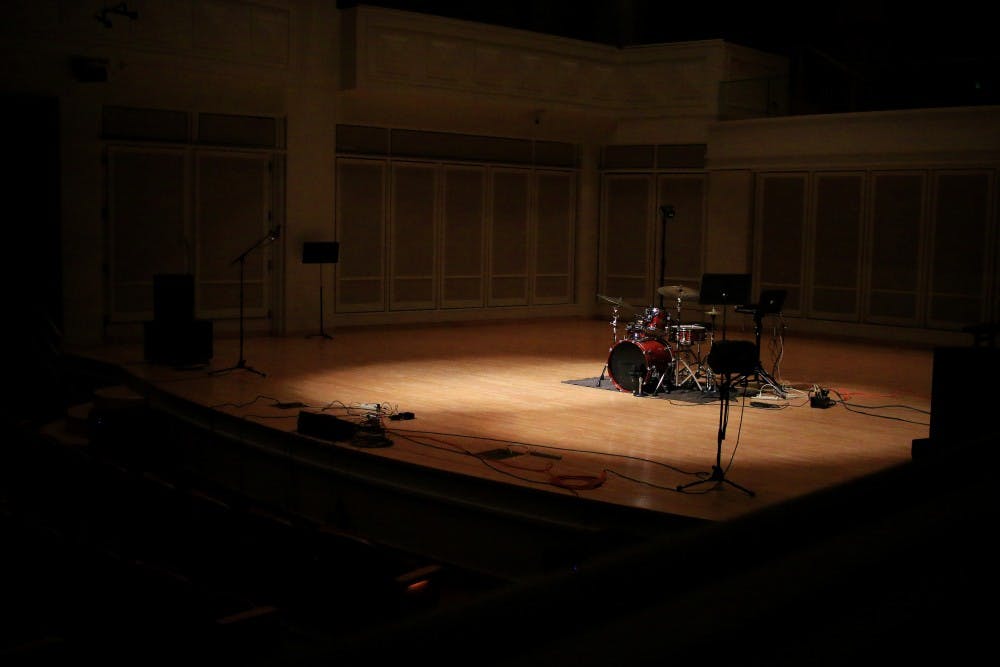Since 11 a.m., Professor of Music Jeffrey Hass and Associate Professor of Music John Gibson were setting up Auer Hall to get the room ready for a computer music recital.
It had taken them the entire day to get the speakers, mixing board and various equipment just right for their student’s performances.
The concert which began at 8 p.m. Sunday night, featured 10 students from the Center for Electronic and Computer Music within the Jacobs School of Music. The students were performing their original pieces, all of which had been composed over the course of the semester.
Surround-sound speakers clicked and clacked with recordings of stones striking wood surfaces and metal grills, as the audience sat with nothing to look at but the empty stage in front of them. The first musician’s opening piece “Do Not Break Anything” was inspired by American composer Christian Wolff’s piece called “Stones,” according to the program notes.
Hass, who is the director of CECM, said in an email that the music the program creates is often confused with EDM, yet it is much different.
“Essentially, our music comes out of the contemporary experimental classical music tradition,” Hass said. “Not that we don’t occasionally have beats, but in general it is much more abstract.”
Earning his doctoral degree in compostion, graduate student William Traschel mixed the solo sound of a live oboist with fixed media or pre-prepared sound files to create his composition called “Quiet Spaces, Crowded Places.”
Traschel said he found the inspiration for his piece by stumbling upon a blog called “The Dictionary of Obscure Sorrows” online. The writer of the blog was interested in language and makes up new words for emotions that don’t exist.
“The made up word that he created was ‘kenopsia’ which is the eerie sensation of being in a place that is usually crowded when it’s empty,” Traschel said.
Felipe Tovar-Henao a doctoral student in composition wrote his piece “Arborescencia” to incorporate the flute and live electronics to create a sound that branches with tree-like gestures.
“The sound of the flute is being divided into different strands, whatever the performer does is going to create different echoes,” Tovar-Henao said. “So it’s like sound growing out of the original one.”
Hass said anyone interested in listening to this style of music should visit the Indiana University Library Catalog. The database has 50 years of computer and electronic music. More computer music recordings by faculty and students can also be found on the music composition website.




